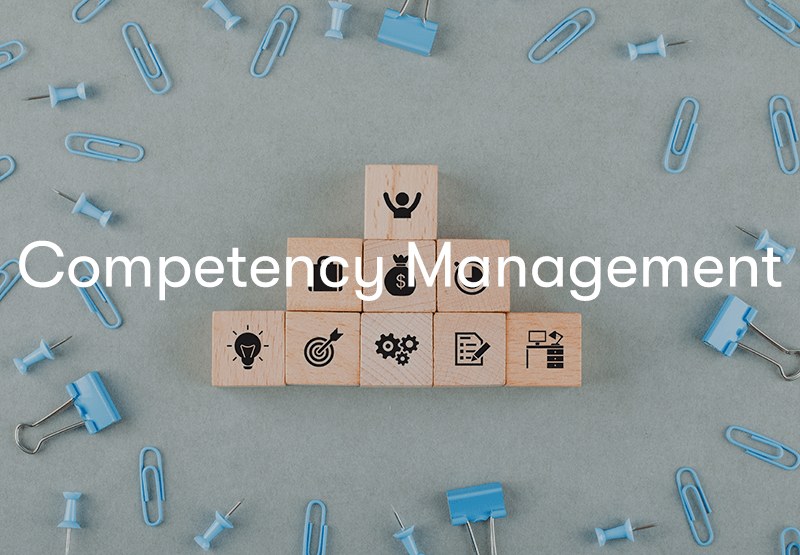Competency Management
Competency management is a strategic and systematic approach used by organisations to identify, assess, develop, and leverage the skills, knowledge, behaviours, and abilities of their workforce. It is a holistic process that aligns individual competencies with the goals and objectives of the organisation. The primary aim of competency management is to enhance employee performance, boost productivity, and drive overall organisational success.
Competency management is of paramount importance for businesses due to its numerous benefits and positive impacts on organisational success. Check out our competency management system for how it could benefit your organisation.
Let's explore some key reasons why competency management is crucial for businesses:
Enhanced Workforce Performance
Competency management helps identify the specific skills and knowledge required for each role within the organisation. By ensuring that employees possess the right competencies, businesses can improve overall workforce performance and productivity. When employees are equipped with the necessary skills, they can carry out their duties more efficiently and effectively.
Improved Employee Engagement and Satisfaction
Providing opportunities for skill development and career advancement through competency management enhances employee engagement and job satisfaction. When employees see that their organisation invests in their growth, they are more likely to feel valued and committed to the company's mission and goals.
Targeted Training and Development
Competency management enables businesses to tailor training and development programs to address specific skill gaps. This targeted approach ensures that employees receive the right training, focusing on the competencies essential for their roles, rather than undergoing generic and irrelevant training sessions.
Effective Succession Planning
Identifying and nurturing high-potential employees through competency management aids in succession planning. Businesses can groom future leaders, ensuring a smooth transition when key positions become vacant. This proactive approach minimises disruptions and maintains continuity in business operations.
Agility and Adaptability
In today's rapidly changing business landscape, agility and adaptability are vital for an organisation's survival. Competency management ensures that employees are equipped with the skills necessary to embrace new technologies, processes, and challenges, helping the business stay competitive.
Better Talent Acquisition and Retention
Competency management can enhance the employer brand and attract top talent. When potential candidates see a commitment to employee growth and development, they are more likely to choose the organisation as their employer of choice. Additionally, employees are more likely to stay with a company that invests in their professional development, reducing turnover rates.
Alignment with Organisational Goals
Competency management aligns individual competencies with the organisation's strategic goals. By ensuring that employees' skills and behaviours are in line with the company's objectives, businesses can create a workforce that collectively works toward achieving the organisation's objectives.
Improved Customer Satisfaction
A competent and skilled workforce is better equipped to deliver high-quality products and services, resulting in improved customer satisfaction. Satisfied customers are more likely to become repeat customers and advocates for the brand, contributing to business growth.
Data-Driven Decision Making
Competency management involves data collection and analysis to assess the skills and performance of employees. This data-driven approach provides valuable insights for decision-making, enabling businesses to allocate resources effectively and make informed talent management decisions.
Compliance and Risk Management
In certain industries, regulatory compliance and risk management are critical. Competency management ensures that employees have the necessary qualifications and certifications to meet regulatory requirements, reducing the risk of non-compliance and potential legal issues.
The link between competencies, job performance, and organisational success is a critical aspect of talent and competency management and organisational development. Understanding and effectively managing this connection can significantly impact an organisation's ability to achieve its goals and maintain a competitive edge.
Identifying and Defining Competencies
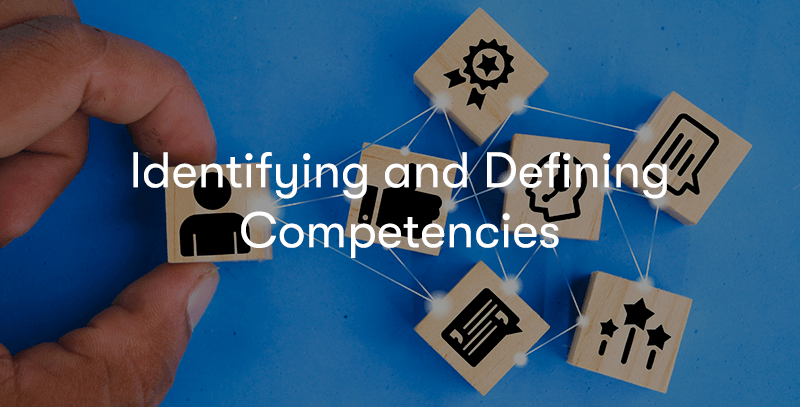
Core competencies vs. job-specific competencies
Core competencies and job-specific competencies are two distinct types of competencies that play different roles in an organisation's talent management and workforce development strategies. Understanding the differences between these types of competencies is crucial for effectively managing and developing a skilled and capable workforce. Let's explore each type in more detail:
Core Competencies:
Core competencies are fundamental skills and attributes that are essential for all employees, regardless of their roles or positions within the organisation. They represent the foundational qualities that contribute to the organisation's overall success and are often aligned with its mission, vision, and values. Core competencies are typically overarching and applicable across various departments and functions.
Examples of Core Competencies:
- Communication - The ability to convey information effectively and actively listen to others.
- Collaboration - Working collaboratively with colleagues to achieve common goals.
- Problem-solving - Analysing issues and finding effective solutions.
- Adaptability - Embracing change and thriving in dynamic environments.
- Customer Focus - Understanding and meeting the needs of customers or clients.
- Integrity - Demonstrating honesty, ethics, and professionalism.
Job-Specific Competencies:
Job-specific competencies, as the name suggests, are skills and capabilities that are unique to specific job roles or functions within the organisation. They represent the specialised knowledge and expertise required to perform specific tasks or responsibilities effectively. Job-specific competencies are tailored to match the requirements of individual roles and are essential for achieving optimal job performance.
Examples of Job-Specific Competencies:
- Software Programming (for software developers)
- Financial Analysis (for financial analysts)
- Sales Techniques (for sales representatives)
- Project Management (for project managers)
- Clinical Procedures (for healthcare professionals)
- Negotiation Skills (for procurement specialists)
Distinguishing Core Competencies from Job-Specific Competencies:
Applicability:
Core competencies apply to all employees across the organisation and are not limited to specific roles or departments.
Job-specific competencies are unique to particular job roles and are relevant only to those employees who perform those specific functions.
Breadth of Use:
Core competencies have a broader application and are transferable across different roles and positions.
Job-specific competencies have a narrower focus and are relevant only to the specific tasks or responsibilities associated with a particular job.
Alignment with Organisational Goals:
Core competencies are closely aligned with the organisation's mission, vision, and values and contribute to its overall success.
Job-specific competencies are aligned with the specific job functions and responsibilities that directly contribute to achieving departmental or organisational objectives.
Development Focus:
Core competencies often receive a higher emphasis in training and development initiatives as they are applicable to a wide range of employees.
Job-specific competencies receive specialised training and development programs tailored to the unique needs of individuals in specific roles.
In conclusion, both core competencies and job-specific competencies play vital roles in an organisation's talent management strategy. Core competencies form the foundation of a competent and high-performing workforce, while job-specific competencies ensure that employees have the specialised skills needed to excel in their specific roles. Striking the right balance between these two types of competencies is essential for building a skilled and versatile workforce that drives organisational success.
Conducting Competency Mapping And Analysis
Conducting competency mapping and analysis is a systematic process that helps organisations identify and define the key competencies required for different roles within the company. This essential step lays the foundation for effective competency management, talent development, and strategic workforce planning. Let's explore the steps involved in conducting competency mapping and analysis:
Identify Target Job Roles
Begin by identifying the job roles that are critical to the organisation's success. This includes both existing roles and potential future roles that may arise as the organisation grows or evolves.
Collect Job Data
Gather comprehensive information about each target job role. This data should include job descriptions, key responsibilities, required qualifications, performance expectations, and any other relevant details.
Engage Stakeholders
Involve key stakeholders, including HR personnel, managers, subject matter experts, and employees performing the target job roles, in the competency mapping process. Their insights and perspectives are valuable for accurately defining the required competencies.
Conduct Job Analysis
Analyse each target job role to understand the specific tasks, responsibilities, and challenges associated with it. This analysis helps identify the knowledge, skills, abilities, and behaviours needed for successful performance.
Identify Core and Job-Specific Competencies
Differentiate between core competencies that apply to all employees and job-specific competencies unique to each role. Core competencies ensure a consistent foundation of skills across the organisation, while job-specific competencies reflect the specialised skills required for particular roles.
Create Competency Framework
Organise the identified competencies into a competency framework or model. The framework should categorise the competencies into logical groups or tiers, making it easy to understand and apply.
Define Competencies
For each competency, create clear and concise definitions that describe what it entails. Use behavioural indicators to specify observable behaviours or actions that demonstrate proficiency in the competency.
Validate Competencies
Validate the competency framework by seeking feedback from key stakeholders, including managers and employees in the target job roles. Their input ensures that the identified competencies accurately reflect the real-world requirements of each role.
Prioritise Competencies
Prioritise the competencies based on their importance and relevance to the success of the organisation and the specific job roles. This prioritisation helps in focusing development efforts on the most critical competencies.
Gap Analysis
Compare the existing skill levels of employees against the required competencies. Identify skill gaps that need to be addressed through training, development programs, or hiring.
Training and Development Plans
Develop tailored training and development plans for employees to close the identified skill gaps and enhance their competencies. These plans may include workshops, seminars, eLearning courses, coaching, mentoring, and on-the-job training.
Continuous Review
Competency mapping and analysis should be an ongoing process, evolving with changes in the organisation's needs and job roles. Regularly review and update the competency framework to ensure its relevance and effectiveness.
How to create competency frameworks
Creating a competency framework is a structured process that involves defining the essential competencies required for different roles within an organisation. A well-designed competency framework serves as a valuable tool for talent management, performance evaluation, and employee development. Here's a step-by-step guide on how to create competency frameworks:
Conduct a Needs Assessment:
Identify the objectives and purposes of the competency framework. Understand why you need it and what you aim to achieve with it.
Conduct a thorough job analysis for each target role. Collect information on job descriptions, responsibilities, qualifications, and performance expectations.
Engage stakeholders, including HR professionals, managers, and employees, to gain different perspectives on competencies relevant to the roles.
Define Core Competencies and Job-Specific Competencies:
Differentiate between core competencies that apply to all employees and job-specific competencies unique to each role.
Core competencies should align with the organisation's mission, values, and overall strategic goals. These competencies create a consistent foundation across the workforce.
Job-specific competencies should reflect the specialised skills and knowledge required for successful performance in specific roles.
Categorise Competencies:
Organise the identified competencies into logical groups or tiers. Categorisation helps in understanding and applying the framework effectively.
Group competencies based on themes or skill areas. For example, communication skills, problem-solving skills, technical expertise, leadership skills, etc.
Define Competencies:
Create clear and concise definitions for each competency. Use behavioural indicators to describe observable behaviours or actions that demonstrate proficiency in the competency.
Ensure that the definitions are specific, measurable, achievable, relevant, and time-bound (SMART).
Validate the Competency Framework:
Seek feedback and validation from key stakeholders, including managers and employees in the target roles. Their input ensures that the identified competencies accurately reflect the real-world requirements of each role.
Revise and refine the competency framework based on the feedback received to ensure its accuracy and relevance.
Prioritise Competencies:
Prioritise the competencies based on their importance and relevance to the success of the organisation and the specific job roles.
Identify critical competencies that are indispensable for successful performance and development.
Align with Performance Management and Development:
Integrate the competency framework into performance management processes, such as performance evaluations and goal-setting. This ensures that competencies are considered when assessing employee performance and providing feedback.
Use the competency framework as a basis for developing individual development plans (IDPs) and training programs. Tailor learning opportunities to address skill gaps and enhance competencies.
Communicate and Train:
Communicate the competency framework to all employees to ensure they understand its purpose and relevance.
Provide training and guidance to managers on how to use the competency framework in performance evaluations, coaching, and talent development discussions.
Continuously Review and Update:
Competency frameworks should be dynamic and adapt to changing organisational needs and evolving job roles.
Regularly review and update the competency framework to ensure its continued relevance and effectiveness.
Assessing Competencies and Skills Gaps

Competency Assessment Methods
Competency assessment methods are essential tools used to evaluate and measure an individual's proficiency in specific competencies. These methods provide valuable insights into an individual's strengths and areas for improvement, helping to guide talent development and performance improvement strategies. Let's explore three common competency assessment methods: self-assessment, manager assessment, and 360-degree feedback.
Self-Assessment
Self-assessment is a competency assessment method in which individuals evaluate their own skills, knowledge, behaviours, and abilities. Participants reflect on their performance and rate themselves against predefined competency criteria. This method encourages employees to take ownership of their development and provides them with an opportunity to identify their strengths and areas for growth.
Key Features of Self-Assessment:
Self-awareness: It helps individuals become more aware of their competencies, achievements, and developmental needs.
Personal Reflection: Participants reflect on their experiences, actions, and behaviours to assess how well they meet the competency requirements.
Employee Empowerment: Self-assessment empowers employees to take an active role in their career development and skill enhancement.
Advantages:
- Promotes employee engagement and ownership of the development process.
- Encourages individuals to think critically about their competencies and identify areas for improvement.
- Facilitates open communication and self-reflection.
Limitations:
- Self-assessments may be biased, as individuals might overestimate their competencies.
- Some employees may lack the self-awareness to accurately assess their own skills and behaviours.
Manager Assessment
Manager assessment involves the evaluation of an employee's competencies by their direct manager or supervisor. Managers observe the employee's performance, review work outputs, and provide feedback based on their observations and interactions. This method offers valuable insights from the perspective of someone who closely supervises the individual's daily work.
Key Features of Manager Assessment:
Performance Observation: Managers assess competencies based on the employee's job performance and behaviour in the workplace.
Regular Feedback: Ongoing feedback from managers helps employees understand their strengths and areas for improvement.
Alignment with Organisational Goals: Manager assessments are usually aligned with the organisation's objectives and job requirements.
Advantages:
- Provides an objective and external perspective on the employee's competencies.
- Links competency assessment to job performance and organisational goals.
- Facilitates constructive feedback and coaching for development.
Limitations:
- Managers may have biases that influence their assessment, impacting the accuracy of the evaluation.
- Time constraints and workload may limit the depth of assessment.
360-Degree Feedback
360-degree feedback is a comprehensive competency assessment method that gathers input from multiple sources, including self, peers, managers, subordinates, and sometimes external stakeholders (e.g., customers or clients). This method provides a well-rounded view of an individual's competencies by collecting feedback from people who interact with the employee in various contexts.
Key Features of 360-Degree Feedback:
Multi-Perspective Assessment: It collects feedback from multiple sources to provide a more comprehensive and balanced assessment.
Anonymity: Feedback providers' identities are often kept confidential, encouraging honest and candid feedback.
Focus on Development: The primary aim of 360-degree feedback is to identify areas for improvement and support employee development.
Advantages:
- Offers a more complete and objective view of an individual's competencies.
- Helps identify patterns and consistencies in feedback, providing a clear picture of strengths and areas for development.
- Supports a culture of continuous learning and development.
Limitations:
- Requires careful management to ensure confidentiality and encourage honest feedback.
- Gathering and analysing feedback from multiple sources can be time-consuming and resource-intensive.
Competency assessment methods, such as self-assessment, manager assessment, and 360-degree feedback, provide valuable insights into an individual's strengths and areas for growth. Each method has its unique advantages and limitations, and organisations may choose to use a combination of these methods to gather a holistic view of employees' competencies. These assessments serve as a foundation for targeted training and development efforts, helping individuals and organisations achieve their full potential.
Identifying skill gaps
Identifying skill gaps and addressing them effectively is a crucial aspect of competency management and talent development. Skill gaps refer to the disparity between the current competencies possessed by employees and the competencies required to perform their roles effectively. Addressing skill gaps is essential for enhancing individual and organisational performance. Here are the steps to identify skill gaps and strategies to address them effectively:
Skill Gap Analysis:
Conduct a comprehensive skill gap analysis by comparing the required competencies for each job role with the current competencies of employees.
Utilise various assessment methods, such as competency assessments, performance evaluations, self-assessments, and 360-degree feedback, to identify gaps accurately.
Involve managers, employees, and HR professionals in the analysis to gain multiple perspectives and ensure a comprehensive understanding of skill gaps.
Prioritise Skill Gaps:
Prioritise skill gaps based on their impact on job performance, alignment with organisational goals, and criticality for overall success.
Focus on addressing skill gaps that have the most significant influence on employee and organisational performance.
Tailor Training and Development Programs:
Develop targeted training and development programs that address specific skill gaps.
Use a mix of learning methods, such as workshops, seminars, eLearning courses, on-the-job training, coaching, and mentoring, to cater to different learning styles and preferences.
Provide personalised development plans for employees to focus on their unique skill development needs.
Encourage Continuous Learning:
Foster a culture of continuous learning and professional development within the organisation.
Encourage employees to take ownership of their learning journey and pursue opportunities for skill enhancement independently.
Support employees in attending conferences, webinars, and industry events to stay updated on the latest trends and best practices.
Coaching and Mentoring:
Implement coaching and mentoring programs to provide individualised guidance and support for skill development.
Pair employees with experienced mentors who can offer valuable insights and advice based on their own experiences.
Cross-Functional Training:
Offer cross-functional training opportunities to enable employees to acquire skills beyond their immediate roles.
Cross-training helps build a versatile and adaptable workforce, capable of filling multiple positions if needed.
Performance Feedback and Recognition:
Provide regular performance feedback to employees, emphasising areas of improvement and acknowledging progress made in addressing skill gaps.
Recognise and reward employees who actively participate in skill development initiatives and demonstrate improvement.
Use Technology and Learning Platforms:
Leverage technology-driven learning platforms and tools to make training resources easily accessible and interactive.
Adopt learning management systems (LMS) to track and manage employee skill development progress effectively.
Measure and Evaluate:
Continuously monitor and measure the effectiveness of skill development programs.
Use metrics, such as improved job performance, increased productivity, and employee satisfaction, to assess the impact of the initiatives.
Supportive Organisational Environment:
Create an environment that supports learning and experimentation, where employees feel encouraged to take risks and learn from failures.
Foster a growth mindset that values continuous improvement and emphasises the importance of skill development.
Developing and Enhancing Competencies
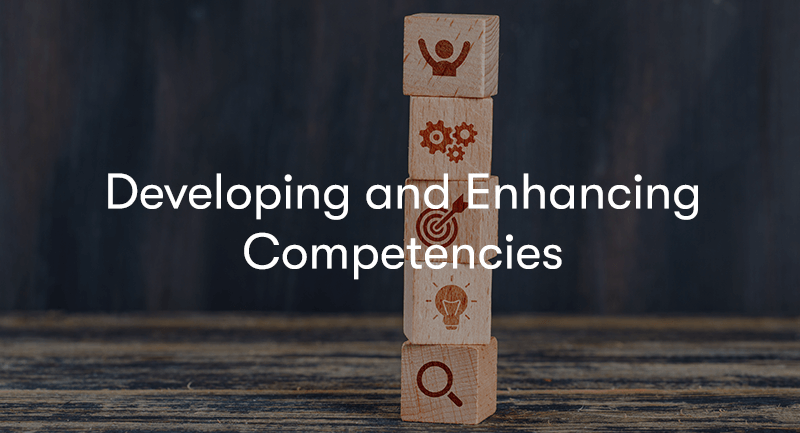
Designing competency-based training and development programs involves creating learning initiatives that directly align with the identified competencies essential for successful job performance. These programs focus on enhancing the skills, knowledge, and behaviours required for specific roles within the organisation. A well-designed competency-based training and development approach ensures that employees receive targeted and relevant learning experiences that contribute to individual growth and overall organisational success. Here are the key steps to design such programs:
Conduct a Training Needs Assessment:
Start by conducting a thorough training needs assessment to identify the skill gaps and learning requirements based on the competency framework.
Use data from competency assessments, performance evaluations, and feedback from managers and employees to identify specific areas that need improvement.
Set Clear Learning Objectives:
Define clear and measurable learning objectives for each training program. The objectives should be specific to the competencies targeted for improvement.
Align the learning objectives with the overall goals of the organisation and the specific job roles being addressed.
Design Targeted Learning Content:
Develop training content that directly addresses the identified skill gaps and competencies.
Use a variety of instructional methods, such as interactive workshops, eLearning modules, simulations, role-playing exercises, and case studies, to engage learners effectively.
If you need help with this process please contact us, we can help or even build a custom training course for your specific needs.
Personalise Learning Paths:
Consider the diverse learning needs and preferences of participants. Personalise the learning paths to cater to different learning styles and levels of expertise.
Offer different training options, such as self-paced learning, group workshops, and one-on-one coaching, to accommodate individual preferences.
Provide Ongoing Support and Resources:
Offer ongoing support and resources to reinforce learning and provide opportunities for continuous skill development.
Provide access to reference materials, job aids, and additional learning resources to support learners beyond the training program.
Incorporate Assessments and Feedback:
Include assessments throughout the training program to measure participants' progress and understanding of the competencies being developed.
Encourage feedback from participants to gather insights into the effectiveness and relevance of the training content.
Link Training to Job Performance:
Ensure that the training directly connects to job performance and the competency requirements of the specific roles.
Set up mechanisms to measure the impact of the training on job performance and competency improvement.
Evaluate Training Effectiveness:
Conduct post-training evaluations to assess the effectiveness of the competency-based training programs.
Use participant feedback, post-training assessments, and performance metrics to gauge the program's success.
Continuous Improvement:
Continuously review and update the competency-based training and development programs to align with evolving organisational needs and changing job requirements.
Seek feedback from participants and stakeholders to identify areas for improvement and enhance the effectiveness of future training initiatives.
Continuous Learning and Feedback
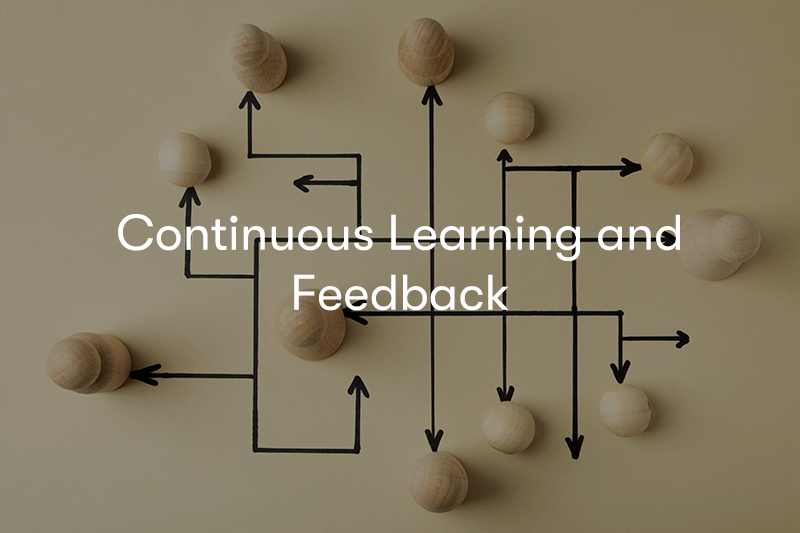
The role of feedback in competency improvement
Feedback plays a vital role in competency improvement as it provides valuable information and insights that help individuals identify their strengths, weaknesses, and areas for development. Constructive feedback is an essential component of competency management, talent development, and performance improvement strategies. Here are the key ways in which feedback contributes to competency improvement:
Self-awareness and Reflection
Feedback offers individuals an external perspective on their competencies and performance. It helps individuals gain self-awareness by identifying their strengths, allowing them to leverage these qualities to their advantage. Moreover, feedback also highlights areas that need improvement, encouraging self-reflection and a deeper understanding of one's skill gaps.
Targeted Development
Feedback provides individuals with specific information about their competencies and areas that require improvement. Armed with this knowledge, individuals can design targeted development plans to address their skill gaps effectively. This helps ensure that time and resources are invested in areas that will yield the most significant impact on their competency improvement.
Motivation and Engagement
Positive and constructive feedback can be highly motivating. When employees receive recognition for their strengths and efforts to improve, it fosters a sense of achievement and encourages continued growth. A culture of regular feedback and recognition can lead to higher levels of engagement and a desire to excel in developing competencies.
Performance Improvement
Feedback is instrumental in guiding individuals towards improved performance. Employees can receive coaching and corrective feedback to address performance issues and develop the competencies necessary for success in their roles. Regular feedback loops help monitor progress and course-correct, if needed, to ensure continuous improvement.
Alignment with Organisational Goals
Feedback that highlights how an employee's competencies align with organisational goals is valuable in emphasising the importance of specific skills. When individuals understand how their competencies contribute to the organisation's success, they are more likely to proactively work on improving those skills.
360-Degree Feedback
360-degree feedback, which involves input from multiple sources, such as managers, peers, subordinates, and self, provides a well-rounded view of an individual's competencies. This comprehensive feedback helps individuals understand how their competencies are perceived by others in various professional interactions, providing valuable insights for improvement.
Continuous Learning
Feedback encourages a growth mindset and a commitment to continuous learning. Individuals who receive feedback as part of a learning culture are more likely to embrace opportunities for skill development and actively seek ways to improve their competencies.
Coaching and Mentoring
Feedback, when delivered through coaching and mentoring, provides personalised guidance and support for competency improvement. Coaches and mentors can help individuals set development goals, identify suitable learning opportunities, and provide ongoing encouragement.
Correcting Misunderstandings
Feedback can help correct misunderstandings about specific competencies and ensure that employees have a clear understanding of what is expected of them. It helps in clarifying performance expectations and aligning them with the competencies needed for success.
Encouraging a culture of continuous learning and development
Encouraging a culture of continuous learning and development is essential for fostering a skilled, adaptable, and high-performing workforce. Such a culture emphasises the value of ongoing skill enhancement and personal growth, benefiting both employees and the organisation. Here are key strategies to promote a culture of continuous learning and development:
Leadership Commitment
Start at the top with leadership demonstrating a strong commitment to continuous learning. When leaders prioritise their own development and support learning initiatives, it sets a powerful example for the rest of the organisation.
Establish Learning Goals
Encourage employees to set individual learning goals aligned with their career aspirations and the organisation's objectives. These goals can be tied to skill development, certifications, or acquiring new competencies.
Provide Learning Opportunities
Offer a diverse range of learning opportunities, including workshops, webinars, seminars, eLearning courses, on-the-job training, and access to learning resources. Tailor the options to cater to different learning styles and preferences.
Create a Learning Library
Develop a repository of learning materials, including books, articles, videos, and online courses, accessible to all employees. This learning library ensures that employees have easy access to self-paced learning resources.
Offer Training and Development Programs
Develop competency-based training and development programs that directly address skill gaps and align with organisational goals. Regularly update and enhance these programs to keep them relevant and effective.
Provide Coaching and Mentoring
Implement coaching and mentoring programs to provide personalised guidance and support for individual growth. Mentors can share their experiences, offer insights, and encourage a growth mindset.
Recognise and Reward Learning
Acknowledge and celebrate employees' efforts in pursuing continuous learning. Recognise achievements such as completing courses, acquiring certifications, or implementing newly learned skills.
Foster a Learning Mindset
Encourage employees to embrace a learning mindset, where they view challenges as opportunities to grow and learn from mistakes. Celebrate a culture where learning is seen as a positive and integral part of professional development.
Support Employee-Led Learning Initiatives
Encourage employees to take ownership of their learning journey and share their knowledge and expertise with others. Support employee-led workshops, knowledge-sharing sessions, and communities of practice.
Emphasise Learning from Failures
Create an environment where employees feel safe to experiment and learn from failures. Encourage open discussions about lessons learned from both successes and setbacks.
Link Learning to Career Growth
Show employees how continuous learning directly correlates with career growth and advancement opportunities within the organisation. Provide a clear career development path and communicate the link between learning and career progression.
Measure and Evaluate Learning Impact
Regularly assess the impact of learning and development initiatives on individual and organisational performance. Use metrics, such as employee satisfaction, performance improvements, and talent retention, to evaluate the effectiveness of the learning culture.
Monitoring and Tracking Competency Progress
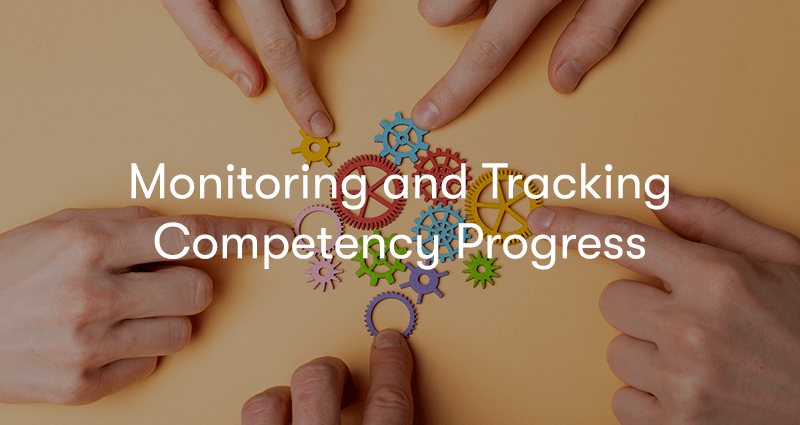
Tools and techniques for tracking competency development
Tracking competency development is essential to assess the progress of individuals and the overall effectiveness of competency-based training and development initiatives. It involves using various tools and techniques to monitor and measure the improvement in employees' competencies over time. Here are some effective tools and techniques for tracking competency development:
Competency Assessments
Conduct regular competency assessments to evaluate the current skill levels of employees. These assessments can be performed through self-assessments, manager assessments, and 360-degree feedback.
Periodic competency assessments provide a baseline for measuring improvement and identifying skill gaps that need to be addressed.
Skill-Based Tests and Examinations
Administer skill-based tests and examinations to assess employees' proficiency in specific competencies. These tests can be designed to evaluate both theoretical knowledge and practical application of skills.
Use pre- and post-tests to measure the improvement in competencies after employees have undergone training and development programs.
Performance Evaluations
Include competency-based evaluations as part of the regular performance review process. This involves assessing how well employees demonstrate the required competencies in their day-to-day work.
Set specific competency-related goals and targets for employees and assess their progress during performance evaluations.
Learning Management Systems (LMS)
Implement an LMS to track employees' participation in training and development programs, along with their performance in assessments and quizzes.
An LMS can provide data on completion rates, test scores, and overall learning progress, enabling HR and L&D teams to monitor competency development at both individual and organisational levels.
Development Plans and Progress Reports
Use individual development plans (IDPs) to outline employees' competency development goals and action steps.
Regular progress reports help track employees' advancement toward their development goals and provide insights into the effectiveness of the learning initiatives.
Performance Metrics
Identify key performance indicators (KPIs) related to competencies and track relevant metrics, such as productivity, customer satisfaction, or project success rates.
Analyse performance metrics to assess whether competency development has a positive impact on job performance.
Behaviour Observation
Encourage managers and supervisors to observe employees' behaviours and actions in real work situations.
Behaviour observation provides valuable insights into how well employees apply newly acquired competencies to their roles.
Feedback and Surveys
Gather feedback from employees and managers about the effectiveness of training and development programs in enhancing competencies.
Conduct surveys to measure employees' perception of their own competency growth and the support they receive for their development.
Certification and Credentialing
Track employees' attainment of certifications and credentials related to specific competencies.
Certifications serve as tangible evidence of competency development and validate employees' skills to internal and external stakeholders.
Longitudinal Studies
Consider conducting longitudinal studies to observe competency development over an extended period.
Long-term studies provide valuable insights into the sustainability and long-lasting impact of competency development initiatives.
Using a combination of tools and techniques for tracking competency development allows organisations to monitor progress, evaluate the effectiveness of learning initiatives, and make data-driven decisions to enhance employee skills. Continuous tracking and evaluation enable organisations to adapt their training and development strategies to meet the evolving needs of their workforce and achieve sustained improvement in competencies at both individual and organisational levels.
Evaluating the effectiveness of competency management efforts
Evaluating the effectiveness of competency management efforts is crucial to determine whether the initiatives are achieving their intended goals and contributing to overall organisational success. By assessing the impact of competency management efforts, organisations can make data-driven decisions, identify areas for improvement, and refine their strategies for talent development and performance enhancement. Here are key steps to effectively evaluate the effectiveness of competency management efforts:
Define Clear Objectives
Start by establishing clear and specific objectives for competency management initiatives. These objectives should align with the organisation's overall goals and support its mission and vision.
Ensure that the objectives are measurable, achievable, and time-bound to facilitate evaluation.
Identify KPIs
Determine the KPIs that will be used to measure the effectiveness of competency management efforts. These KPIs may vary depending on the specific goals of the initiatives.
Common KPIs include employee performance metrics, competency assessment scores, training completion rates, and employee satisfaction with development programs.
Baseline Assessment
Conduct a baseline assessment of employee competencies before implementing competency management initiatives. This assessment serves as a starting point for measuring improvement over time.
Use a combination of methods, such as competency assessments, performance evaluations, and feedback surveys, to establish the baseline.
Track Competency Development
Continuously track the development of employees' competencies using various tools and techniques, as mentioned in the previous response.
Regularly collect data on skill development, training participation, performance improvements, and other relevant metrics.
Analyse Data and Performance Trends
Analyse the collected data to identify trends, patterns, and correlations related to competency development and its impact on performance.
Use data analysis to gain insights into which competencies are showing improvement and their influence on overall organisational success.
Compare Against Objectives and Benchmarks
Compare the actual results against the predefined objectives and benchmarks to assess the success of competency management efforts.
Evaluate whether the initiatives have met the set targets and how they perform in comparison to industry best practices or competitors.
Employee Feedback and Surveys
Gather feedback from employees to understand their perception of competency management efforts and the impact on their development and job performance.
Conduct surveys to measure employee satisfaction, engagement, and the effectiveness of the learning experiences.
Manager and Stakeholder Feedback
Seek feedback from managers and stakeholders to gauge their observations on the improvement in employee competencies and the impact on team and organisational performance.
Cost-Benefit Analysis
Conduct a cost-benefit analysis to assess the return on investment (ROI) of competency management efforts.
Compare the costs of implementing the initiatives against the benefits, such as improved productivity, reduced turnover, and enhanced organisational performance.
Continuous Improvement
Use evaluation results to identify areas for improvement and inform the development of future competency management strategies.
Continuously review and adapt competency management efforts based on the feedback and evaluation data to enhance their effectiveness.
Integrating Competency Management into Performance Evaluations
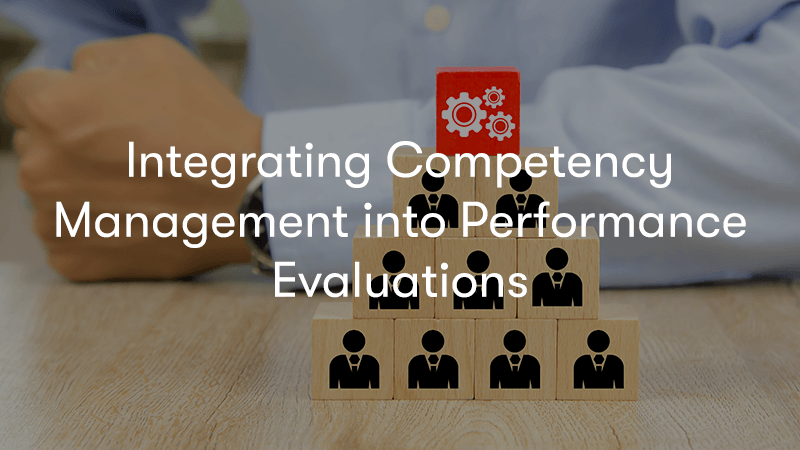
How to align competency assessments with performance appraisals
Aligning competency assessments with performance appraisals is a strategic approach that ensures that employee competencies are effectively linked to job performance and organisational goals. When done correctly, this alignment enhances the accuracy and objectivity of performance evaluations and helps organisations identify areas for skill development and improvement. Here's how to align competency assessments with performance appraisals:
Develop Competency-Based Performance Criteria
Start by defining clear and measurable performance criteria that are directly linked to the competencies required for each job role.
Identify the key competencies that significantly impact job performance and include them in the performance criteria.
Integrate Competencies into Performance Expectations
Communicate the identified competencies and their importance to employees during goal setting and performance planning.
Align individual performance objectives with the specific competencies that employees need to demonstrate in their roles.
Use Competency-Based Rating Scales
Incorporate competency-based rating scales into the performance appraisal process. These scales should reflect the proficiency levels of each competency.
Employees and managers can use these rating scales to assess the degree to which the competencies are demonstrated during the appraisal period.
Train Managers on Competency Assessment
Provide training to managers on how to assess competencies effectively during performance evaluations.
Offer guidance on recognising and evaluating behaviours that indicate competency proficiency.
Gather Multi-Source Feedback
Utilise 360-degree feedback or multi-source feedback mechanisms to collect input from various sources, such as peers, subordinates, and customers, on employees' competencies and performance.
This multi-source feedback provides a comprehensive view of competency development and job performance.
Include Competency Assessments as a Component
Include a specific section in the performance appraisal form dedicated to evaluating competencies.
Managers can use this section to provide feedback on how well employees demonstrated the required competencies throughout the appraisal period.
Provide Behavioural Examples
Offer behavioural examples that illustrate different levels of competency proficiency for each competency being assessed.
These examples can guide managers and employees in understanding what specific behaviours to look for when evaluating competencies.
Tie Development Plans to Competency Assessments
Use the competency assessment results to identify areas for skill development and improvement.
Align individual development plans with the competencies that employees need to enhance for future growth.
Encourage Ongoing Coaching and Feedback
Encourage managers to provide regular coaching and feedback on competency development throughout the performance period, not just during formal appraisals.
Regular feedback helps employees understand how their competencies contribute to their overall performance and career growth.
Periodic Review and Calibration
Conduct periodic reviews and calibration sessions to ensure consistency in competency assessments across different managers and departments.
Calibration sessions help minimise biases and ensure that competency assessments are fair and objective.
Linking competencies to career progression and succession planning
Linking competencies to career progression and succession planning is a strategic approach that enables organisations to identify and develop employees with the right skills and potential to fill key roles within the organisation in the future. By aligning competencies with career paths and succession planning, organisations can ensure a steady pipeline of qualified talent to meet future leadership and critical role needs. Here's how competencies are linked to career progression and succession planning:
Competency-Based Job Descriptions and Requirements
Develop clear and detailed job descriptions that outline the competencies required for each role within the organisation.
Use competency frameworks to define the essential skills, knowledge, and behaviours that employees need to succeed in different positions.
Career Development Paths
Create career development paths that outline the progression of competencies required for employees to move from one role to another.
Identify specific competencies that individuals need to acquire or enhance to be eligible for promotion to higher-level positions.
Competency-Based Performance Appraisals
Utilise competency-based performance appraisals to evaluate how well employees demonstrate the required competencies in their current roles.
Tie performance evaluations to specific competency levels and use this information to inform career progression decisions.
Individual Development Plans (IDPs)
Link competency assessments to individual development plans (IDPs) for employees.
Use competency assessment results to identify skill gaps and tailor development plans to help employees acquire the competencies needed for their desired career paths.
Succession Planning
Identify critical positions and key roles within the organisation that require specific competencies for successful performance.
Identify high-potential employees who exhibit the competencies necessary for these roles and include them in the organisation's succession planning efforts.
Training and Development Programs
Develop targeted training and development programs that focus on enhancing competencies required for career progression and succession planning.
Invest in leadership development programs that foster competencies needed for future leadership roles.
Competency-Based Interviews and Assessments
Use competency-based interviews and assessments when identifying candidates for promotion or succession planning purposes.
Evaluate candidates' competencies and potential to succeed in the target roles during the selection process.
Performance-Based Promotion Decisions
Base promotion decisions on demonstrated competencies and performance, rather than solely on tenure or seniority.
Transparently communicate the link between competency development and career advancement to motivate employees to focus on their growth.
Mentorship and Coaching
Provide mentorship and coaching opportunities to individuals who show potential for career progression.
Mentors can guide employees in developing the competencies required for their desired career paths.
Continuous Monitoring and Evaluation
Continuously monitor the progress of employees in acquiring and developing the required competencies for career progression.
Regularly review succession plans and adjust as needed based on competency development and changes in organisational needs.
Tools for Competency Management
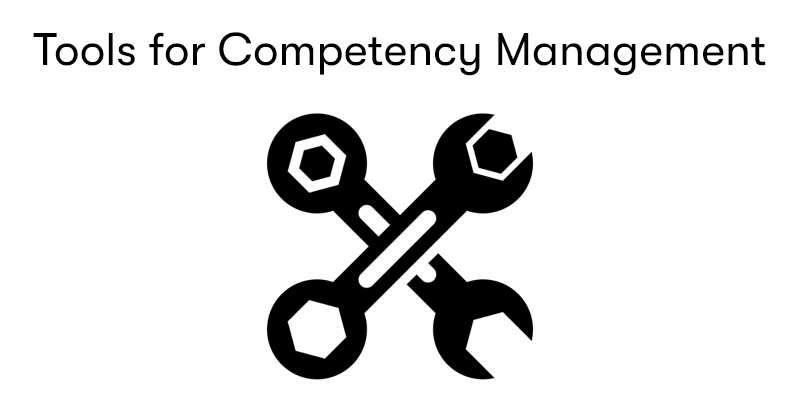
People, their knowledge, skills and competences are key organisational assets and underpin an organisations success. Being able to record this information and have instant access to accurate and complete data on competencies is invaluable. Having access to a tool such as Opusview is an investment which will enable improved decision making across the organisation, supporting improved training decisions, workforce and talent management and project management to name just three.
Final Notes on Competency Management
In conclusion, competency management is a powerful framework that aligns employee skills with organisational goals. By defining core and job-specific competencies, businesses can identify skill gaps and design targeted training. Implementing competency assessment methods like self-assessment, manager evaluation, and 360-degree feedback enhances performance. Encouraging a culture of continuous learning fosters a skilled and engaged workforce.
Effective competency tracking tools ensure progress is monitored, leading to data-driven decisions and continuous improvement. Linking competencies to performance appraisals and career progression ensures objective evaluations and a talented leadership pipeline through succession planning. Embrace competency management to unlock the full potential of your employees and drive long-term success in today's dynamic business landscape.
Happy Competency Building!


